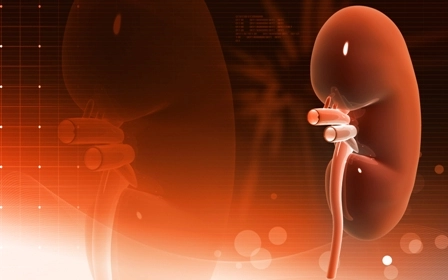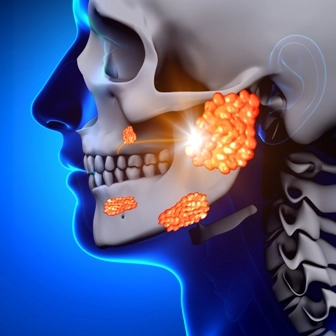Use Op Reports, I.D. Fundamentals of Cystourethroscopy Procedures

Use these three operative reports to drive the point home. Every surgical specialty has its challenges in knowing how to properly and accurately interpret an operative report. When it comes to urology coding, the surgical reports are understandably complex — and without proper knowledge and guidance, you might be left feeling helpless. That’s why we’re here to help break down one of the more common urological surgeries — cystourethroscopies. As you’ll see, it takes a trained eye to differentiate between each type of cystourethroscopy code. Use these sample operative reports to kick-start you on your way to cystourethroscopic coding success. Consider Codes From 52000 Through 52010 Using some real-world clinical examples, you’ll have a look at portions of an operative report from a few different kinds of cystourethroscopic procedures. For the purposes of this article, you’ll be working with some of the following cystourethroscopy codes listed under the 52000 through 52010 range: Disclaimer: The operative reports included below have been slightly modified vfrom their original versions in order to save space. Don’t Reach for Code 52001 Without Supportive Documentation Op Report #1: The patient was brought to the operating room, laid in lithotomy position. His lower abdomen and genitals were prepped and draped in sterile fashion. I introduced the rigid cystoscopy though the urethral meatus. I used the urethrotome to open an area of narrowing in order to pass the cystoscope to the prostatic urethra. The bladder and prostatic urethra are normal. At this point, the catheter could not reach the bladder, so it was removed. I made a new incision in the suprapubic area using a surgical blade and a 22-French catheter introducer was pushed through the incision to the pelvis. I put a guidewire to the bladder and then a 20 French catheter was applied over the guidewire all the way up to the bladder. The bladder was irrigated and is functioning adequately. You might find numerous reasons to consider this surgical report challenging due to the diagnostic and therapeutic components. Your initial step is to identify exactly what services the surgeon performed. First, the surgeon performs a diagnostic cystourethroscopy, documenting that the bladder and prostatic urethra are functioning properly. Due to unknown complications, the surgeon could not introduce the catheter without incising the suprapubic area. Via this incision, the surgeon introduces a catheter and performs a bladder irrigation. As you can see, there is no code that encompasses a cystourethroscopy with a bladder instillation. You might consider using 52001, however the provider makes no reference of obstructing clots. Even if the provider documents “debris” or similar verbiage, you should not consider code 52001. Instead, you will report a cystourethroscopy and separate bladder irrigation code. For the cystourethroscopy, report 52000. For the bladder irrigation, report code 51700 (Bladder irrigation, simple, lavage and/or instillation). Checking the National Correct Coding Initiative (NCCI, or CCI) edits between 52000 and 51700, you’ll find a modifier “1” indicator. Since the surgeon performed two respective procedures from one another (one diagnostic, one therapeutic), you may consider modifier 59 (Distinct Procedural Service) or modifier XU (Unusual non-overlapping service) for Medicare patients. Use 52005 With or Without Extraneous Included Services Op Report #2: A rigid cystoscope was placed into the urethra. Upon inspection of the bladder, both ureteral orifices have clear efflux. No evidence of bladder pathology. Bladder capacity was adequate. A #5-French cone tipped catheter was inserted into both ureteral orifices, respectively. Both ureters were normal. The upper collecting system was normal as well and the calices were sharp. Adequate drainage was noted bilaterally. The bladder was drained and inspected again. This operative report involves a cystourethroscopy with ureteral catheterization. Therefore, code 52005 is most appropriate. As noted in the code description, this code includes irrigation, instillation, and ureteropyelography, when performed. This report does not include any of those additional services. Don’t Consider 74420 Without Interpretation Op Report #3: A 5-French end-hole catheter was placed in the right ureteral orifice. A right retrograde pyelogram under real-time fluoroscopy demonstrated no gross static filling defect or obstructive uropathy. Subsequently, a left retrograde pyelogram was performed. This demonstrated no gross static filling defect or obstructive uropathy. At this point, then the bladder was filled to capacity. The cystoscope was withdrawn. Here, you’ve got to consider the coding of both the cystourethroscopy and the retrograde pyelogram. “Most often, the surgeon will perform the retrograde pyelogram, but the radiological interpretation will be performed by a radiologist,” says Barry Rosenberg, MD, chief of radiology at United Memorial Medical Center in Batavia, New York. Assuming this is the case, you should not consider reporting 74420 (Urography, retrograde, with or without KUB) alongside 52005. The code description “exclusive of radiologic service” means that the surgical component of the pyelogram is included in 52005. The radiologist will bill out 74420 with modifier 26 (Professional component). Coder’s note: The surgeon may often use the images obtained during the retrograde pyelogram to ensure appropriate placement of ureteral stent exchange under code 52332 (Cystourethroscopy, with insertion of indwelling ureteral stent (eg, Gibbons or double-J type)). However, unless the surgeon performs a formal interpretation of the study, you will not report 74420 separately. “The urologist should only report 74420 when both performing the pyelography and subsequently interpreting the results,” says Lindsay Della Vella, COC, medical coding auditor at Precision Healthcare Management in Media, Pennsylvania. “More often, a separate radiologist will perform the interpretation and bill out 74420 with modifier 26 [Professional Services],” Della Vella explains. In the facility setting, the technical component of both the 74420 and 52005 may be reported when performed and appropriately interpreted and documented.




